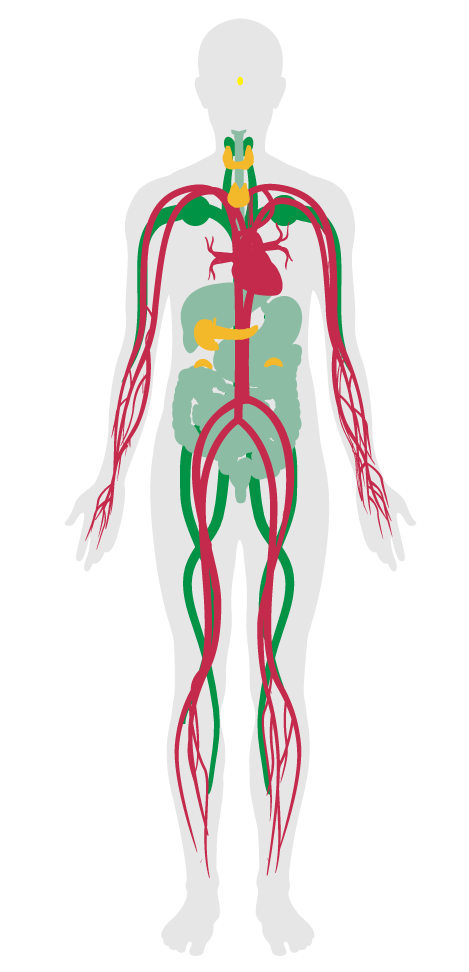Fruits and vegetables
- 38 Fruits and vegetables
- 39 Processed foods
- 40 Food allergies
- 41 Hand washing
- 42 Food contamination
- 43 Artificial ingredients
- 44 Nutritional information
- 45 Food advertising
- 46 Safe food preparation materials
- 47 Serving sizes
- 48 Special diets
- 49 Responsible food production
- 50 Food storage
- 51 Food production
- 52 Mindful eating
- P1 Food environment
- P7 Strategic Dining Design
38. Fruits and vegetables
Regular consumption of fresh fruits and vegetables is the cornerstone of a healthy diet and can lower the risk of cancer, diabetes, heart disease and obesity. Insufficient fruit and vegetable intake, on the other hand, is one of the top 10 risk factors contributing to global mortality, leading to approximately 2.7 million deaths worldwide. The Dietary Guidelines for Americans recommend an average consumption of at least 4 servings of fruits and 5 servings of vegetables per day. However, only 8% of the U.S. population consume the recommended amount of fruit, and only 6% achieve the recommended intake of vegetables.
To encourage people to incorporate more fruits and vegetables as a central component of their diet, this feature requires that a variety of each is readily available where food is provided. These requirements are not applicable to projects that do not provide food service or vending.
If solid foods are sold or distributed on a daily basis on the premises by (or under contract with) the project owner, then the selection includes at least one of the following:
Cafeterias operated or contracted by the project owner, if present, include the following design interventions:

Applicability Matrix
| Core & Shell | New & Existing Buildings | New & Existing Interiors | |
|---|---|---|---|
| Part 1: Fruit and Vegetable Variety | - | P | P |
| Part 2: Fruit and Vegetable Promotion | - | P | P |
| Commercial Kitchen | Education | Multifamily Residential | Restaurant | Retail | |
|---|---|---|---|---|---|
| Part 1: Fruit and Vegetable Variety | - | P | - | P | - |
| Part 2: Fruit and Vegetable Promotion | - | P | - | P | - |
Verification Methods Matrix
| Letters of Assurance | Annotated Documents | On-Site Checks | |
|---|---|---|---|
| Part 1: Fruit and Vegetable Variety | Operations Schedule | Spot Check | |
| Part 2: Fruit and Vegetable Promotion | Operations Schedule | Spot Check |
| 38.2.b |
Smarter Lunchrooms Can Address New School Lunchroom Guidelines and Childhood Obesity recommends color photo of fruit and vegetables on menu selection. |
| 38.2.c |
Smarter Lunchrooms Can Address New School Lunchroom Guidelines and Childhood Obesity recommends vegetable dishes be made available at the start of the food distribution line. |
| 38.2.d |
Smarter Lunchrooms Can Address New School Lunchroom Guidelines and Childhood Obesity recommends that fruits are made available at the checkout location. |
| 38.2.a |
In Slim by Design, Wansink notes that in one intervention in a school, positioning the salad bar away from the wall led to an increase in salad bar sales by 200 to 300 percent within a few weeks. |
